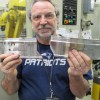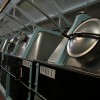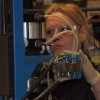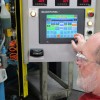Background
This page is no longer being updated. For ongoing coverage of this topic, go to New Hampshire Public Radio.
______
Over the past 15 years or so, New Hampshire’s manufacturing economy has been moving away from traditional mill work and toward high-tech and so-called “smart” manufacturing. In high-tech manufacturing, workers produce technological components, like computer parts. And in smart manufacturing, advanced technology allows fewer and more skilled workers to be more efficient as they produce traditional goods.
This new-school manufacturing economy has weathered relatively well, but New Hampshire’s transition toward tech hasn’t always been a smooth one. More automation on production lines and decades of manufacturing decline across the country have shrunk opportunities for manufacturing work. Twenty-five years ago, about one out of every four jobs in New Hampshire was in manufacturing. Today, only about one in six jobs fall into that sector.
All of New Hampshire’s counties host manufacturing operations. But according to the New Hampshire Center for Public Policy, the sector is more dominant in the southwest corner of the state, covering parts of the Merrimack Valley, Monadnock, and Dartmouth-Sunapee regions. For example, in Sullivan County, nearly a third of wages come from manufacturing. And and Cheshire and Hillsborough Counties, the sector accounts for about one-fifth of residents’ earnings.













